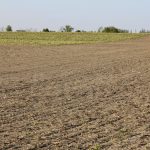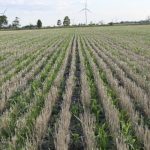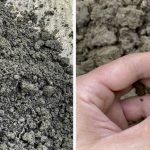Ontario’s crop season continues to be advanced of normal, which is especially evident in perennial and over-winter crop development. Crop heat units (CHU) and growing degree days (GDD) are significantly […] Read more

Winter wheat crops quickly advance, alfalfa weevil seen active
OMAFRA Field Crop Report for the week of May 16

How Ontario crops are shaping up so far
OMAFRA Field Crop Report for the week of May 9
Cereals Winter wheat is advanced by 10-14 days in southern Ontario compared to other years, particularly in early planted fields. Fields in Essex are now at the early boot stages. […] Read more

Three tips for weed management this fall
OMAFRA Field Crop Report for the week ending September 18
Reflecting on some of the weed control issues that came up this past spring, below are three key items where management activities this fall can significantly improve control and/or financial […] Read more

Feed the crop that feeds the livestock!
OMAFRA Field Crop Report for the week ending September 4
For forage producers, the production year starts in the fall. What farmers do from mid-August to the end of the growing season impacts this winter’s feed inventory and next year’s […] Read more

The potential impacts to field crops from wildfire smoke
OMAFRA Field Crop Report for the week ending August 30
Smoke from northern Ontario and Quebec wildfires was prevalent across Ontario for several weeks in June and early July. While a smoky haze was often visible during these weeks (see […] Read more

What to do with those stubble fields now? Consider BioStrip Till
OMAFRA Field Crop Report for the week ending August 23
Winter wheat combining has almost wrapped up across the province after a challenging harvest due to persistent rainfall. There is a lot of enthusiasm for wheat across Ontario as yields […] Read more

What’s in your crop decision-making toolbox?
OMAFRA Field Crop Report for the week of August 14
It’s the middle of August and we’re in that awkward lull where cereals are off, the last passes of fungicides on soybeans are done and it is almost time to […] Read more

Identifying and addressing soil structure challenges
OMAFRA Field Crop Report for the week of August 7
A well-structured soil improves water infiltration, air exchange, rooting, and ultimately crop yield. On the other hand, a cloddy, dense, or compacted soil may result in ponding, nutrient losses, and […] Read more

Managing cover crop nitrogen, residue breakdown
OMAFRA Field Crop Report for the week of July 31
Across Ontario, wheat harvest continues, opening the best window for planting cover crops in most field crop rotations. You can find more information on the 2023 winter wheat quality update and […] Read more

Evaluating your soil’s structure
Why it’s important and how to measure quality
Many Ontario soils display a similar pattern of compaction. The secondary tillage layer, usually the top two to four inches, is relatively loose and friable, with mostly small, rounded aggregates, […] Read more
